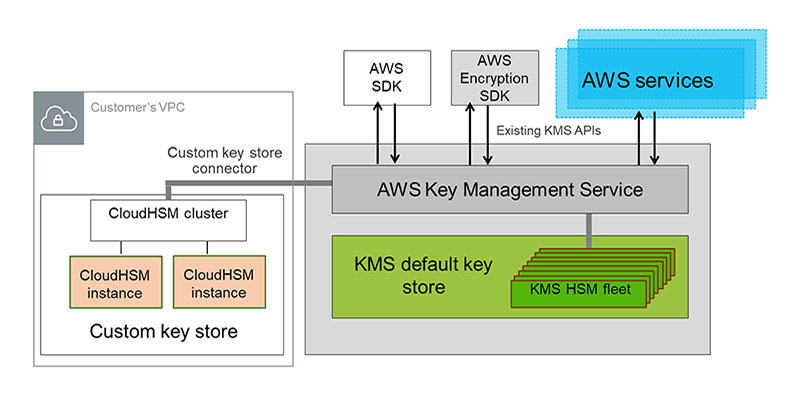AWS Security Blog
Tag: Encryption
How to share encrypted AMIs across accounts to launch encrypted EC2 instances
May 18, 2023:We’ve updated the syntax in the JSON policy document in the Create the policy setting for the source account section. August 31, 2021:AWS KMS is replacing the term customer master key (CMK) with AWS KMS key and KMS key. The concept has not changed. To prevent breaking changes, AWS KMS is keeping some […]
How to quickly launch encrypted EBS-backed EC2 instances from unencrypted AMIs
August 31, 2021: AWS KMS is replacing the term customer master key (CMK) with AWS KMS key and KMS key. The concept has not changed. To prevent breaking changes, AWS KMS is keeping some variations of this term. More info. An Amazon Machine Image (AMI) provides the information that you need to launch an instance […]
Are KMS custom key stores right for you?
October 29, 2021: AWS KMS is replacing the term customer master key (CMK) with AWS KMS key and KMS key. The concept has not changed. To prevent breaking changes, AWS KMS is keeping some variations of this term. More info. You can use the AWS Key Management Service (KMS) custom key store feature to gain […]
Amazon ElastiCache for Redis now PCI DSS compliant, allowing you to process sensitive payment card data in-memory for faster performance
Amazon ElastiCache for Redis has achieved the Payment Card Industry Data Security Standard (PCI DSS). This means that you can now use ElastiCache for Redis for low-latency and high-throughput in-memory processing of sensitive payment card data, such as Customer Cardholder Data (CHD). ElastiCache for Redis is a Redis-compatible, fully-managed, in-memory data store and caching service […]
Podcast: How AWS KMS could help customers meet encryption and deletion requirements, including GDPR
Encryption is a powerful tool to protect your data but it can be difficult to get right because it demands understanding how encryption keys are created, distributed, used, and managed. To make encryption easier to use, we created AWS Key Management Service (KMS) to let you scale your use of the cloud without struggling to […]
How to encrypt and sign DynamoDB data in your application
August 31, 2021: AWS KMS is replacing the term customer master key (CMK) with AWS KMS key and KMS key. The concept has not changed. To prevent breaking changes, AWS KMS is keeping some variations of this term. More info. If you store sensitive or confidential data in Amazon DynamoDB, you might want to encrypt […]
Now You Can Create Encrypted Amazon EBS Volumes by Using Your Custom Encryption Keys When You Launch an Amazon EC2 Instance
October 29, 2021: AWS KMS is replacing the term customer master key (CMK) with AWS KMS key and KMS key. The concept has not changed. To prevent breaking changes, AWS KMS is keeping some variations of this term. More info. Amazon Elastic Block Store (EBS) offers an encryption solution for your Amazon EBS volumes so […]
The Most Viewed AWS Security Blog Posts in 2017
September 9, 2021: Amazon Elasticsearch Service has been renamed to Amazon OpenSearch Service. See details. The following 10 posts were the most viewed AWS Security Blog posts that we published during 2017. You can use this list as a guide to catch up on your AWS Security Blog reading or read a post again that […]
How to Encrypt Amazon S3 Objects with the AWS SDK for Ruby
August 31, 2021: AWS KMS is replacing the term customer master key (CMK) with AWS KMS key and KMS key. The concept has not changed. To prevent breaking changes, AWS KMS is keeping some variations of this term. More info. Recently, Amazon announced some new Amazon S3 encryption and security features. The AWS Blog post […]
How to Encrypt and Decrypt Your Data with the AWS Encryption CLI
August 31, 2021: AWS KMS is replacing the term customer master key (CMK) with AWS KMS key and KMS key. The concept has not changed. To prevent breaking changes, AWS KMS is keeping some variations of this term. More info You can now encrypt and decrypt your data at the command line and in scripts—no […]








